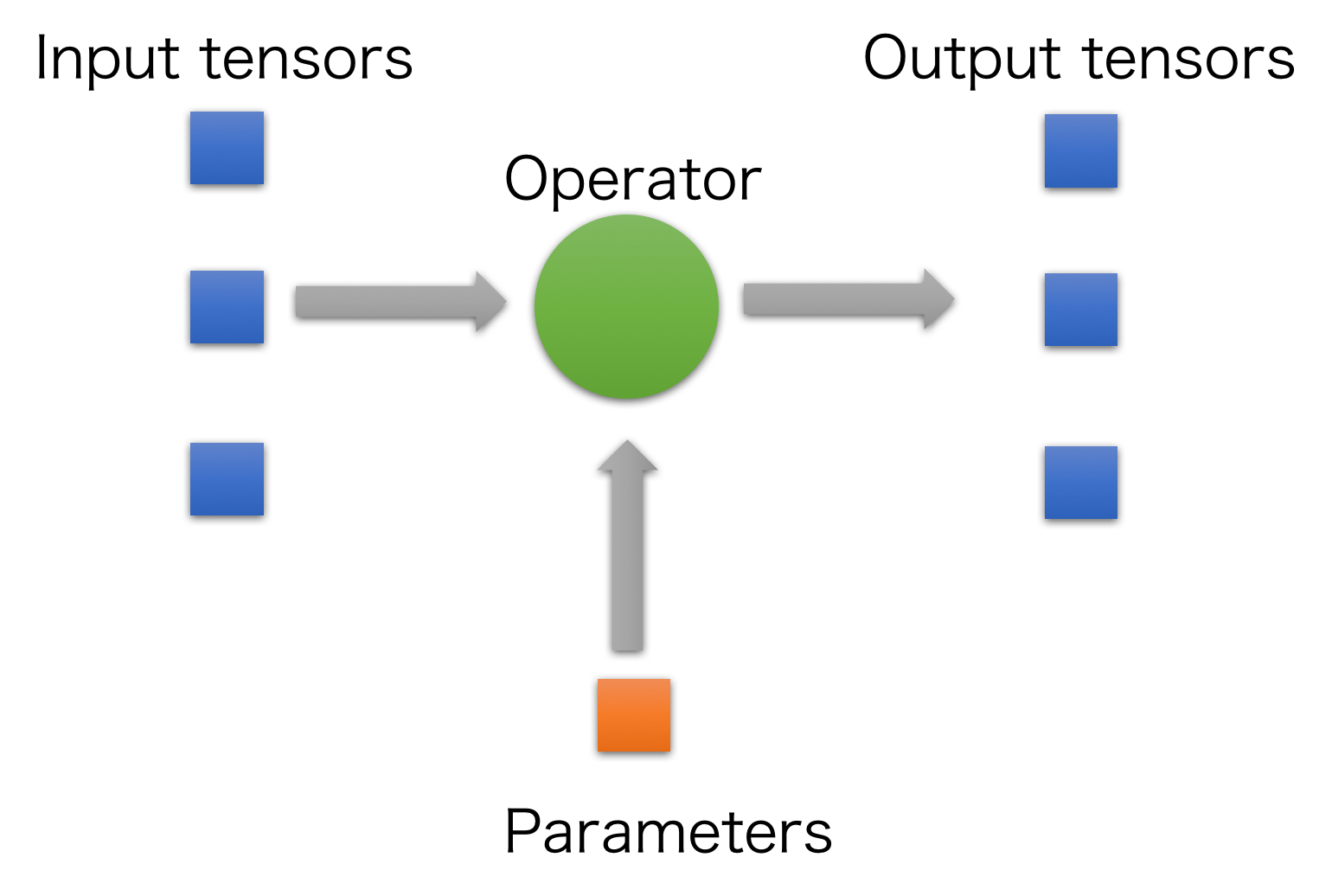Operator
Operator is the basic calculation unit in Serrano. Serrano defines a protocol ComputableOperator (API) to unify the computation actions of an Operator.
Any class conforms to ComputableOperator can be used in Serrano.
Check here to know how to define your own operator.
Basic
The action of a ComputableOperator is taking in some tensors and output some tensors. And it may also take in some parameters.

For example the AbsOperator(API), a unary operator, will do absolute computation on its inputTensors and store result in outputTensors.
inputTensors and outputTensors
A ComputableOperator has two attributes:
inputTensors: an array ofTensorrepresenting inputsoutputTensors: an array ofTensorrepresenting outputs
For different operators, the number of input tensors and number of output tensors may be same or .
Tensor allocation
In Serrano, operators do not take care of tensor allocation. So before doing calculation, inputTensors and outputTensors should be assigned.
If user use Graph or Model APIs, they do not need to concern tensor allocations for operators.
They just need to feed in the input tensors for the model.
Checking before computation
There two APIs defined in protocol ComputableOperator(API):
outputShape(shapeArray:): Calculate the output tensors' shapes given a list of input shapes. If the operator cannot operate on the input shapes, this function returnnil. This function can be used to check if some input tensors are valid or not for an operator.inputOutputTensorsCheck(): This function actually check validation ofinputTensor,outputTensorsand other related parameter variables. If cannot pass validation,fatalError()will be raised and application will exit. And users can find error information in loggings (or console window if in development).
Usually, users do not need to call these two functions.